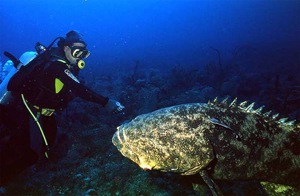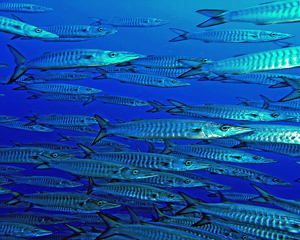
Scuba Diving Costa Blanca
Scuba diving in Costa Brava is quite an experience with something suitable for every level of experience. Just off the coast of Torrevieja for instance you’ll find a rich variety of reef and wreck diving, which is already incredibly popular with Spanish divers
Tha majority of scuba diving is situated in La Mange and Cabo de Palos where water temperatures never get below 13ºC and in summer reach 29ºC.
For those seeking for a ‘relaxed dive’ we recommend the 6 to 20 metre deep rocky bays of Cala Fria and Cala Muerta which are bursting with sea life and unusual rock formations. Look carefully and you may spot the odd octopus on the sea bed! There’s a good chance that you’ll also see the spectacular brown ray hiding against the sandy bottom.

Morays are common and hidden within the rock walls, heads popping out to take a nose at intruders. Meter long Groupers, poisonous stonefish, barracuda and small rays are very common to the area so make sure you pack your underwater camera. Visibility is around 10-15 meters in the shallower depths.
Situated in the marine reserve, the 20 metre deep Bajo el Dentro is a very popular reef to explore for its monstrous morays and large shoals of barracudas – this is definitely one for the more experienced diver seeking some thrills. It’s not uncommon to see dolphins, eagle rays, turtles or sunfish in this area.
When it comes to wreck diving; head to The Naranjito, a 50 metre freighter which lies about 3 km out of Cabo de Palos. You’ll have visibility at around of 20 metres at around a depth of 27 metres. You can enter the load compartments quite safely.

If it’s treasure you’re seeking then we advise you head for the Cartagena area, where you’ll find several dive sites where relics from ships that have sunk after failed attacks on the nearby harbour of Cartagena. It’s not uncommon to find pieces of old pottery, copper nails or pieces of lead from the wooden ships.
For more information or to book a dive we suggest you contact Dive Costa Blanca.


